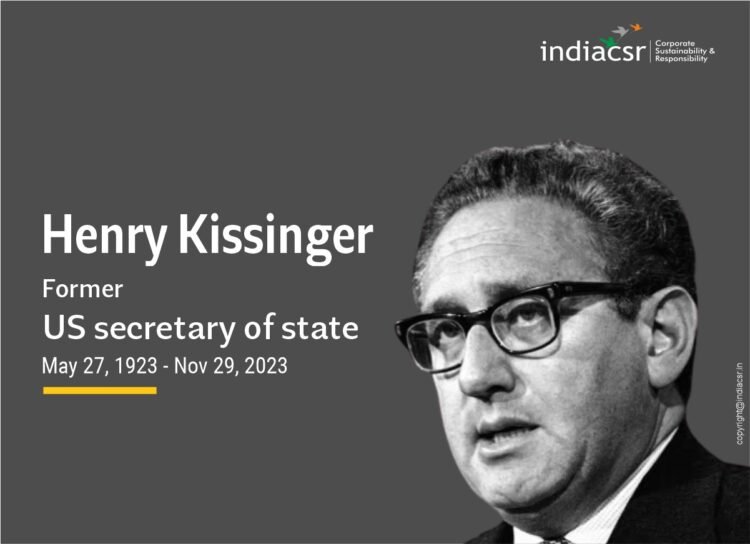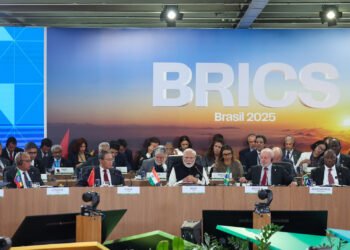The era of Henry Kissinger in the realm of U.S.-India relations was characterized by a series of diplomatic challenges and ideological confrontations. His tenure marked a period of significant developments that shaped the trajectory of bilateral relations for decades to follow. Despite the rocky moments, this era laid the groundwork for future diplomatic engagements, highlighting the complexities and potentials of Indo-American relations.
The relationship between India and the United States during Henry Kissinger‘s tenure as the U.S. National Security Advisor and Secretary of State was marked by a complex interplay of geopolitical strategies and ideological differences. This period, spanning the late 1960s to the mid-1970s, was crucial in shaping the diplomatic ties between these two nations, heavily influenced by the Cold War dynamics, regional conflicts, and the evolving world order.
The Early Years: Setting the Stage
In the late 1960s, Henry Kissinger stepped into the international arena at a time when India’s political landscape was undergoing significant transformations. With India firmly aligned with the Soviet Union under the Indo-Soviet Treaty of Friendship and Cooperation, the stage was set for a diplomatic tussle between the U.S. and India. Kissinger’s realpolitik approach clashed with India’s non-aligned stance, laying the groundwork for a complex relationship.
The 1971 Indo-Pak War: A Turning Point
The 1971 Indo-Pak war over Bangladesh’s independence was a watershed moment in U.S.-India relations. Kissinger, aligning with Pakistan, a key ally in the U.S.’s China policy, led to a significant strain in relations with India. The U.S. administration’s decision to send the Seventh Fleet to the Bay of Bengal was viewed by India as an act of intimidation, exacerbating the tensions.
Nuclear Politics: The Pokhran Test
India’s first nuclear test in Pokhran in 1974 added another layer of complexity to the relationship. Kissinger’s staunch anti-proliferation stance led to a critical view of India’s nuclear ambitions. This event marked a significant departure from the previous diplomatic engagements, as concerns over nuclear proliferation overshadowed other aspects of the bilateral relationship.
The Later Years: Toward a Thaw
Towards the end of Kissinger’s tenure, there was a gradual, albeit cautious, shift towards improving relations with India. The realization of India’s growing geopolitical importance led to a more pragmatic approach. This period saw a series of diplomatic engagements aimed at mending fences and exploring areas of mutual interest, albeit with continued underlying tensions.

Henry Kissinger and Indira Gandhi: An Intricate Dance of Diplomacy
The diplomatic relationship between Henry Kissinger and Indira Gandhi was marked by a series of challenges, ideological differences, and strategic calculations. Their interactions mirrored the larger global political landscape of the time, characterized by the Cold War’s divisions and the emergence of new nationalistic aspirations. The legacy of their engagements offers valuable insights into the art of international diplomacy, highlighting both the complexities and the potential for reconciliation and understanding between nations.
Exploring the Complex Interactions Between Two Formidable Political Figures
The relationship between Henry Kissinger, the American diplomat known for his realpolitik strategy, and Indira Gandhi, India’s then Prime Minister, was a fascinating study in international diplomacy. During a period marked by Cold War tensions and regional conflicts, the interactions between these two leaders were pivotal in shaping the course of U.S.-India relations. This article delves into the complexities and subtleties of their diplomatic engagements.
Early Encounters: The Foundation of a Fraught Relationship
The initial interactions between Kissinger and Gandhi were set against the backdrop of the Cold War, where India’s non-aligned stance often clashed with U.S. interests. Kissinger, known for his pragmatic approach to foreign policy, viewed Gandhi’s India with a degree of skepticism, given its close ties with the Soviet Union. Gandhi, on her part, was wary of American intentions in the region, particularly in the context of Pakistan.
The 1971 Crisis: A Diplomatic Conundrum
The 1971 Indo-Pak War, which led to the creation of Bangladesh, was a critical moment in Kissinger-Gandhi relations. The U.S., under Kissinger’s guidance, supported Pakistan, while Gandhi navigated India’s involvement in the conflict, leading to a significant humanitarian and political crisis. This period was marked by tense negotiations, with Kissinger and Gandhi at the helm, each defending their nation’s interests amidst a rapidly evolving geopolitical landscape.
Nuclear Tensions and Political Distrust
The 1974 Pokhran nuclear test by India added a new dimension to the Kissinger-Gandhi dynamic. Kissinger’s strong stance on nuclear non-proliferation clashed with Gandhi’s determination to pursue India’s nuclear program. This period was characterized by mutual distrust and strategic maneuvering, as both leaders navigated the complex issue of nuclear politics in a divided world.
The Later Years: A Gradual Thaw
Despite the challenges, the later years of the Kissinger-Gandhi era saw a gradual improvement in relations. Both leaders recognized the importance of dialogue and, to an extent, managed to put aside their differences to explore areas of mutual interest. This phase was crucial in setting the stage for future U.S.-India relations, moving beyond the immediate tensions of the Cold War era.























